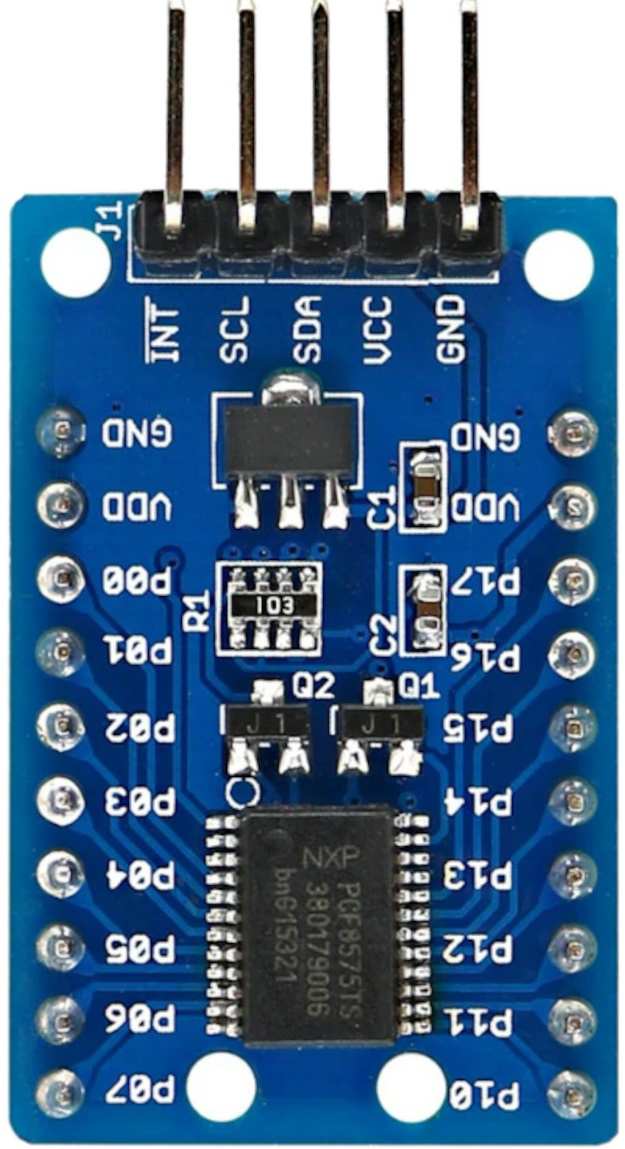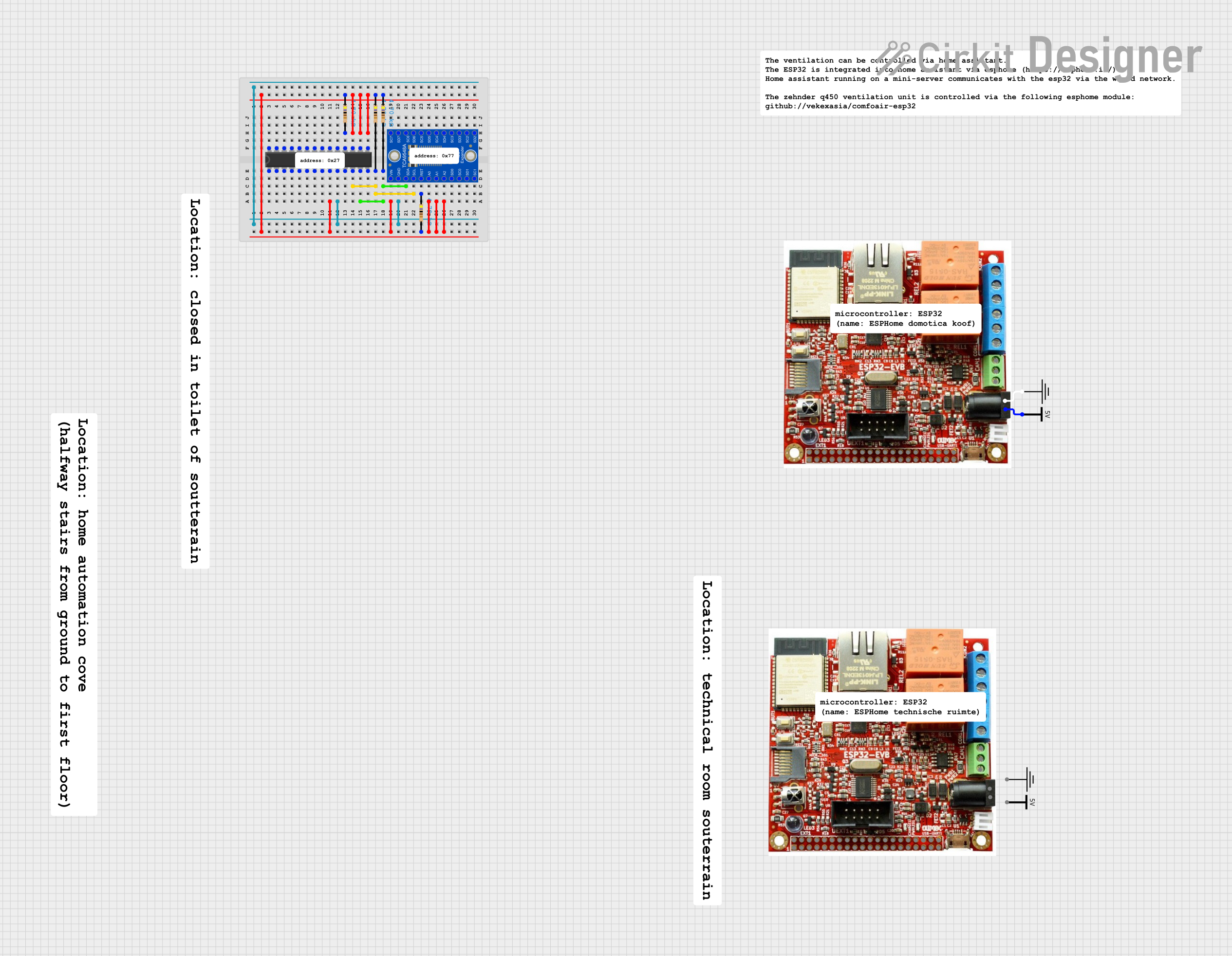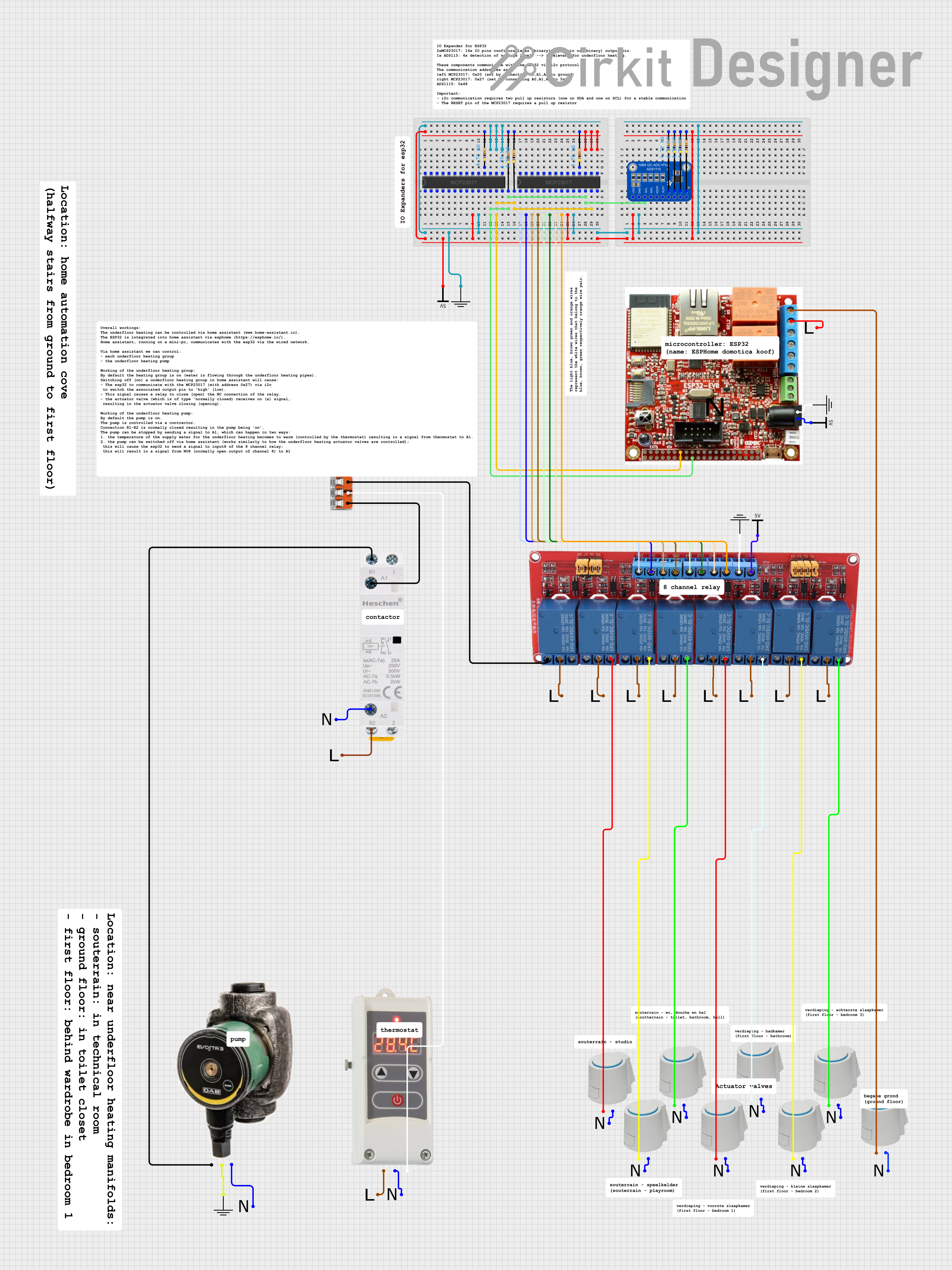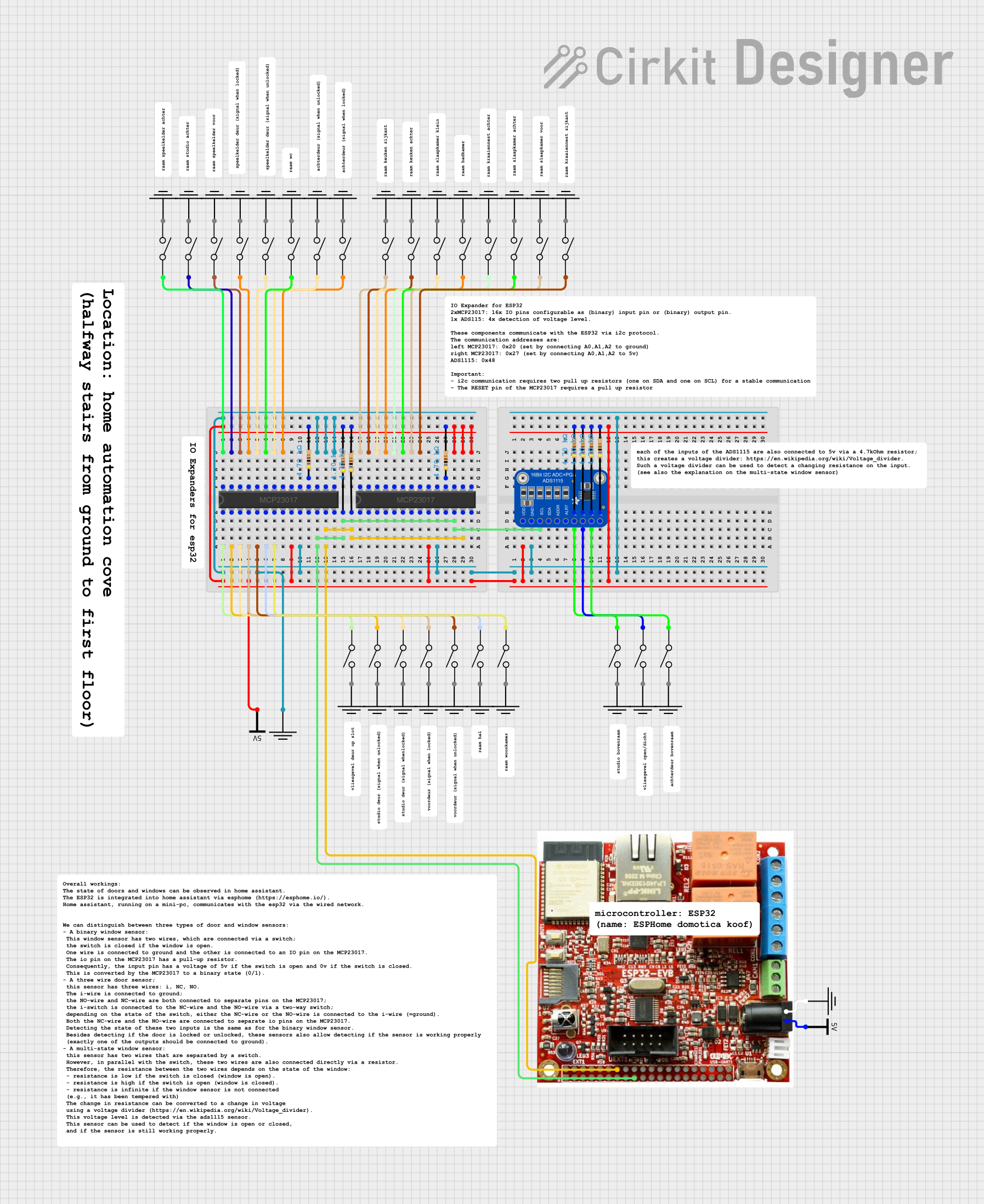
How to Use PCF8575 IO Expander: Examples, Pinouts, and Specs

 Design with PCF8575 IO Expander in Cirkit Designer
Design with PCF8575 IO Expander in Cirkit DesignerIntroduction
The PCF8575 is a versatile I/O expander chip that allows you to extend the number of input/output pins available on a microcontroller or microprocessor. It operates via the I2C interface, which makes it compatible with most microcontroller families, including popular boards like the Arduino UNO. The PCF8575 features 16 quasi-bidirectional I/O ports, which can be used for input or output without the need for configuration. This makes it ideal for applications where additional I/Os are needed, such as keypad interfaces, display controls, and other situations where the number of I/O pins on the main controller is limited.
Common applications include:
- Expanding the number of I/O pins on microcontrollers
- Interfacing with LCD displays, keypads, and other peripherals
- Home automation systems
- Industrial control systems
Explore Projects Built with PCF8575 IO Expander

 Open Project in Cirkit Designer
Open Project in Cirkit Designer
 Open Project in Cirkit Designer
Open Project in Cirkit Designer
 Open Project in Cirkit Designer
Open Project in Cirkit Designer
 Open Project in Cirkit Designer
Open Project in Cirkit DesignerExplore Projects Built with PCF8575 IO Expander

 Open Project in Cirkit Designer
Open Project in Cirkit Designer
 Open Project in Cirkit Designer
Open Project in Cirkit Designer
 Open Project in Cirkit Designer
Open Project in Cirkit Designer
 Open Project in Cirkit Designer
Open Project in Cirkit DesignerTechnical Specifications
Key Technical Details
- Operating Voltage: 2.5V to 5.5V
- I2C Interface
- 16 quasi-bidirectional I/Os
- Interrupt output
- 400 kHz I2C bus clock frequency
- Low standby current
Pin Configuration and Descriptions
| Pin Number | Pin Name | Description |
|---|---|---|
| 1 | A0 | Address input 0 |
| 2 | A1 | Address input 1 |
| 3 | A2 | Address input 2 |
| 4 | P00 | Quasi-bidirectional I/O port 0 |
| 5 | P01 | Quasi-bidirectional I/O port 1 |
| ... | ... | ... |
| 19 | P17 | Quasi-bidirectional I/O port 17 |
| 20 | VSS | Ground |
| 21 | SDA | Serial Data Line |
| 22 | SCL | Serial Clock Line |
| 23 | INT | Interrupt Output |
| 24 | VDD | Positive Power Supply |
Usage Instructions
Interfacing with a Microcontroller
To use the PCF8575 with a microcontroller like the Arduino UNO, follow these steps:
- Connect VDD to the microcontroller's 5V power output.
- Connect VSS to the microcontroller's ground.
- Connect SDA and SCL to the microcontroller's I2C data and clock lines, respectively.
- Set the A0, A1, and A2 pins to either high or low to set the I2C address.
- Connect the I/O pins (P00 to P17) to the peripherals as needed.
Best Practices
- Use pull-up resistors on the SDA and SCL lines.
- Ensure that the power supply is stable and within the specified voltage range.
- Avoid running I2C lines near high-frequency signals to minimize interference.
Example Code for Arduino UNO
#include <Wire.h>
// PCF8575 I2C address is 0x20(32) if A0, A1, and A2 are connected to GND
#define PCF8575_ADDRESS 0x20
void setup() {
Wire.begin(); // Initialize I2C
Serial.begin(9600); // Initialize serial communication
}
void loop() {
// Write to the PCF8575
Wire.beginTransmission(PCF8575_ADDRESS);
Wire.write(0xFF); // Set all pins to high
Wire.endTransmission();
delay(1000); // Wait for a second
// Read from the PCF8575
Wire.requestFrom(PCF8575_ADDRESS, 2); // Request 2 bytes from the PCF8575
if(Wire.available()) {
byte data0 = Wire.read(); // Read first byte (pins P00 to P07)
byte data1 = Wire.read(); // Read second byte (pins P10 to P17)
Serial.print("P00-P07: ");
Serial.println(data0, BIN);
Serial.print("P10-P17: ");
Serial.println(data1, BIN);
}
delay(1000); // Wait for a second
}
Troubleshooting and FAQs
Common Issues
- I2C Communication Failure: Ensure that the SDA and SCL lines are connected properly and that pull-up resistors are in place.
- Incorrect Addressing: Verify that the A0, A1, and A2 pins are set to the correct logic levels for the desired I2C address.
- No Response from I/O Pins: Check that the PCF8575 is powered correctly and that the I/O pins are not overloaded.
Solutions and Tips
- Use a logic analyzer or oscilloscope to check the integrity of the I2C signals.
- Make sure that the I2C address used in the code matches the hardware address set by the A0, A1, and A2 pins.
- If using the interrupt feature, ensure that the INT pin is connected to an interrupt-capable pin on the microcontroller.
FAQs
Q: Can the PCF8575 pins sink/source high current? A: No, the PCF8575 is designed for low-power applications. Check the datasheet for exact current limits.
Q: How do I change the I2C address of the PCF8575? A: The I2C address can be changed by connecting the A0, A1, and A2 pins to either VDD or VSS. Each combination represents a different address.
Q: Can I use multiple PCF8575 expanders on the same I2C bus? A: Yes, you can use up to 8 PCF8575 expanders on the same I2C bus by setting different addresses using the A0, A1, and A2 pins.